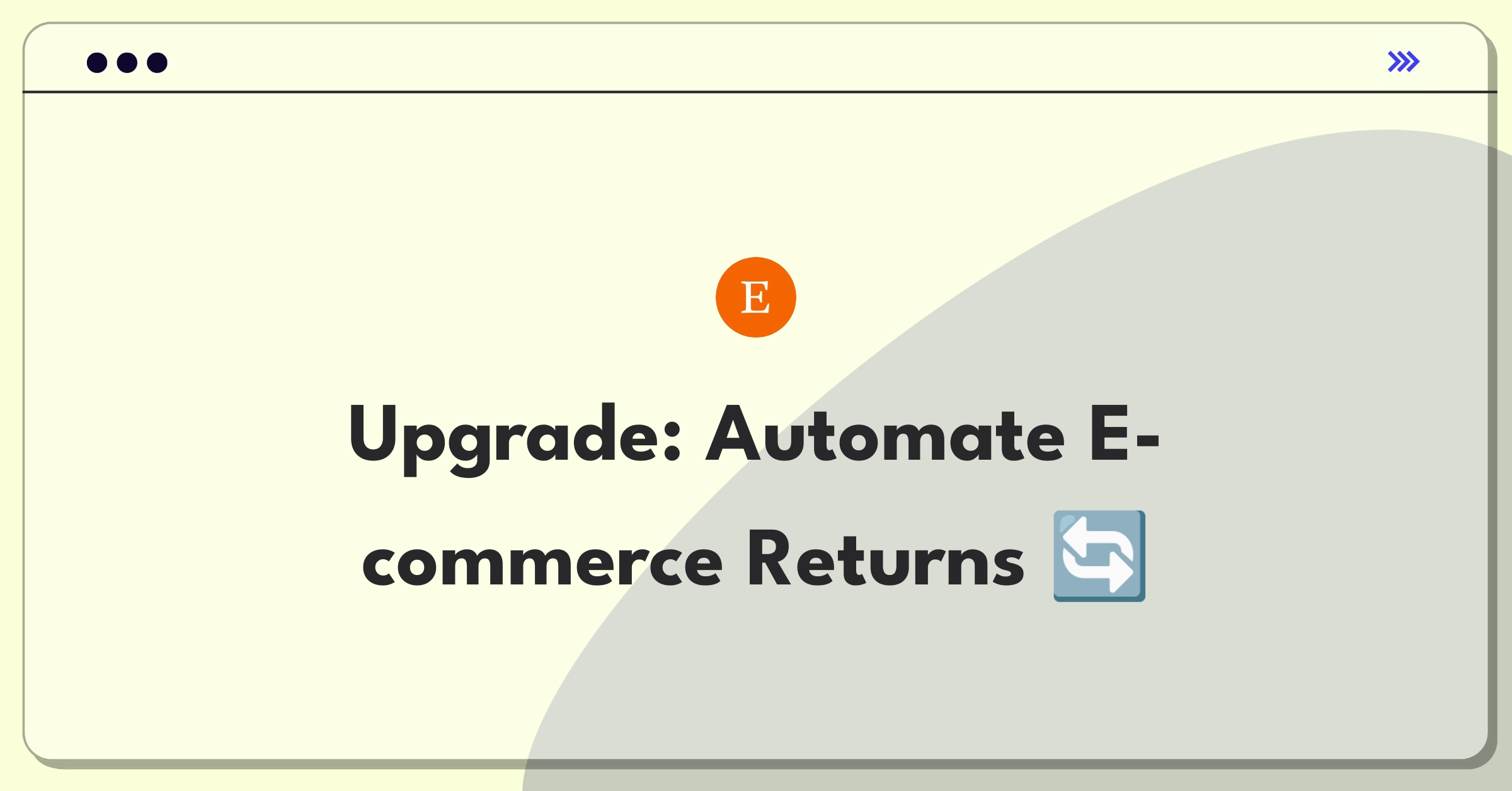Automating the Return Experience for E-commerce: A Technical Product Strategy
To automate the return experience for an e-commerce company, we'll implement a microservices-based architecture with AI-driven decision making, real-time inventory management, and seamless integration with logistics partners. This solution will optimize the return process, reduce operational costs, and improve customer satisfaction.
Introduction
The challenge of automating the return experience for an e-commerce company presents a complex technical problem that directly impacts customer satisfaction, operational efficiency, and the bottom line. Our goal is to create a scalable, efficient, and user-friendly system that streamlines the return process while minimizing costs and maximizing customer retention.
To address this challenge, I'll follow a structured approach:
- Clarify technical requirements
- Analyze the current state and challenges
- Propose technical solutions
- Develop an implementation roadmap
- Define metrics and monitoring strategies
- Manage risks
- Outline a long-term technical strategy
Tip
Throughout this process, we'll ensure that our technical solution aligns with business objectives, balancing customer experience with operational efficiency.
Step 1
Clarify the Technical Requirements (3-4 minutes)
To ensure we're addressing the right technical challenges, I'd like to clarify a few key points:
-
"Considering the current e-commerce platform architecture, are we dealing with a monolithic system or a more modern, distributed architecture? This will significantly impact our approach to integrating new return automation features.
Why it matters: Determines the level of effort required for integration and potential need for refactoring Expected answer: Monolithic architecture with some microservices Impact on approach: May require a hybrid approach, gradually moving towards a fully distributed system"
-
"What's our current tech stack, particularly for order management and inventory systems? Understanding this will help us determine the best way to interface with existing systems for real-time updates during the return process.
Why it matters: Influences choice of technologies and integration methods Expected answer: Java backend with PostgreSQL database, REST APIs Impact on approach: Would leverage existing APIs and potentially introduce message queues for asynchronous processing"
-
"Are there any specific security or compliance requirements we need to consider, especially regarding customer data handling during returns?
Why it matters: Ensures our solution meets legal and security standards Expected answer: GDPR compliance required, PCI DSS for payment reversals Impact on approach: Will need to implement strong data encryption and access controls"
-
"What's our current deployment model? Are we using containerization or cloud services that could facilitate scaling our return automation system?
Why it matters: Affects our ability to rapidly deploy and scale the new system Expected answer: Partial use of Docker containers, moving towards Kubernetes Impact on approach: Would design for container-based deployment with potential for easy scaling"
Tip
Based on these clarifications, we'll assume a hybrid architecture with some microservices, a need for strong data security, and the ability to leverage containerization for our solution.
Subscribe to access the full answer
Monthly Plan
The perfect plan for PMs who are in the final leg of their interview preparation
$99 /month
- Access to 8,000+ PM Questions
- 10 AI resume reviews credits
- Access to company guides
- Basic email support
- Access to community Q&A
Yearly Plan
The ultimate plan for aspiring PMs, SPMs and those preparing for big-tech
$99 $33 /month
- Everything in monthly plan
- Priority queue for AI resume review
- Monthly/Weekly newsletters
- Access to premium features
- Priority response to requested question


.png)